In 2019, Break Free From Plastic, a global organsation for plastic reduction, conducted a brand audit targeting at brands around the world, and found that among the top ten brands that generate the most plastic waste, seven are food brands. Plastic reduction has become a popular topic in the food industry. We will explore those environmentally friendly and interesting designs of sustainable food packaging with you.
- Paper to replace plastics
(1) Packaging of Riesco Ice Cream
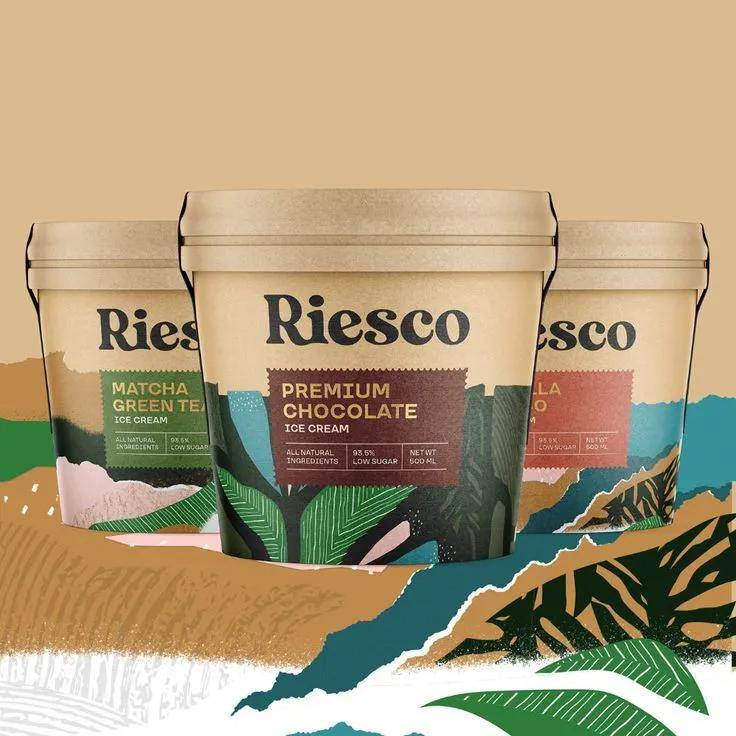
Source of the picture: Packaging of the World
Design: Widarto Impact
All Riesco’s ice cream packaging o is made from food-grade kraft paper. The designer designed three botanical illustrations as the main features of the packaging, representing natural, premium, attractive and inspiring product qualities. Each label has a unique and easily identifiable colour so that customers can easily distinguish between different flavors of ice cream.
(2) Shār Snacks Packaging of Nut
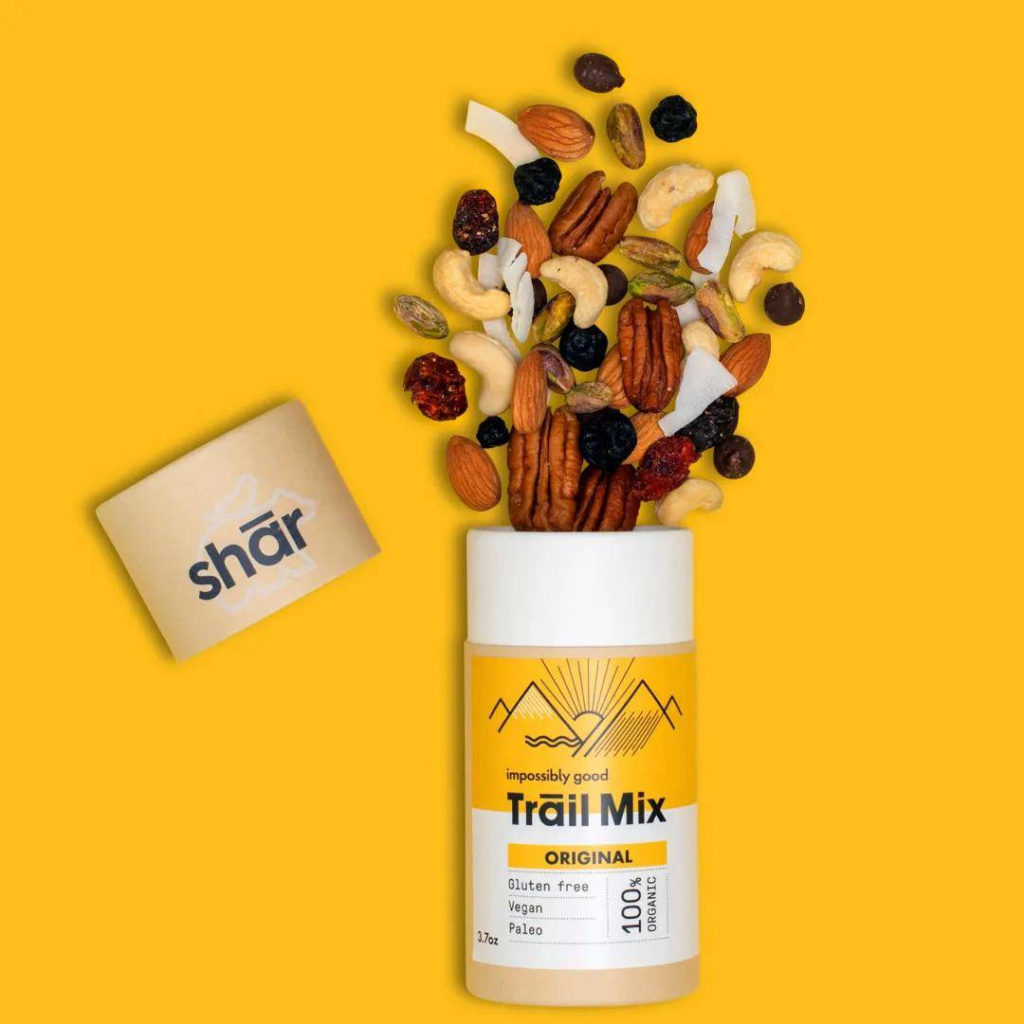
Source of the picture: Pentawards
Brand: Shār Snacks
Design: Asprey Creative
In order to ensure the health and safety of food, Shār Snacks chose Ecotube, an edible material. What’s more, Ecotube is plastic free and can be reused. Designers create packaging of multiple sizes to fit the size of the pouch/bag/cup so as to ensure portability. The lid is designed in a cylindrical shape and has a certain depth, so that it is convenient for consumers to share food with friends. It perfectly fits with the positive life philosophy and spirit of sharing of the brand.
(3) CHATU Packaging of Tea
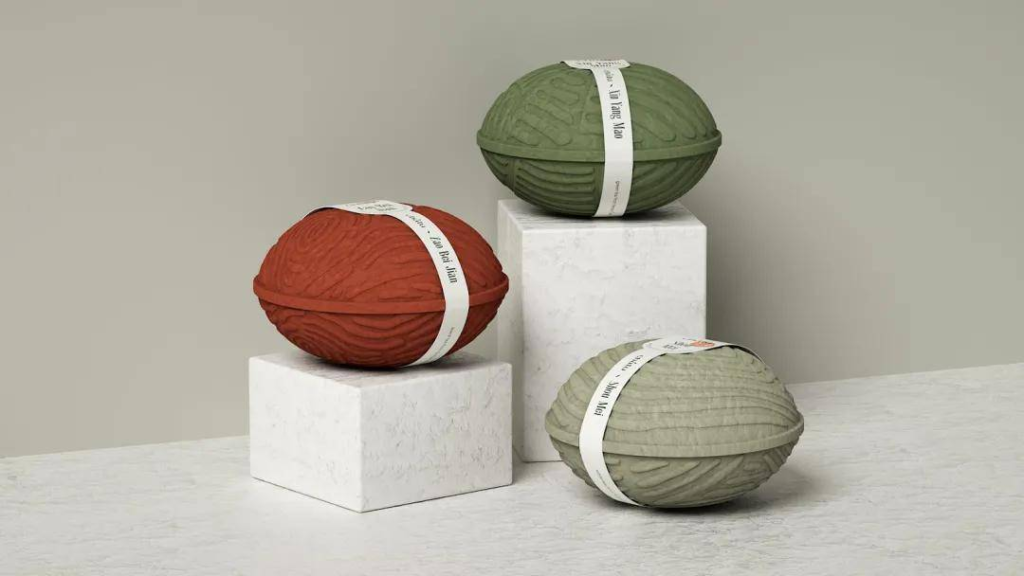
Source of the picture: Packaging of the World
Design: Xenia Alexandrova
This tea packaging is inspired by Chinese tea gardens. CHATU is a kind of premium Chinese tea collected in Sichuan, Henan and Fujian provinces. The texture of the packaging is inspired by the layers of tea trees in a tea garden, and the moulded pulp packaging is dyed with natural dyes to match the three types of tea (white, green and red). The overall appearance is similar to a traditional Chinese teapot. The tea is packaged in two layers of cotton bags, and the design ensures the air permeability of the packaging while using environmentally friendly materials.
(4) Green Rebels United Packaging of Chocolate
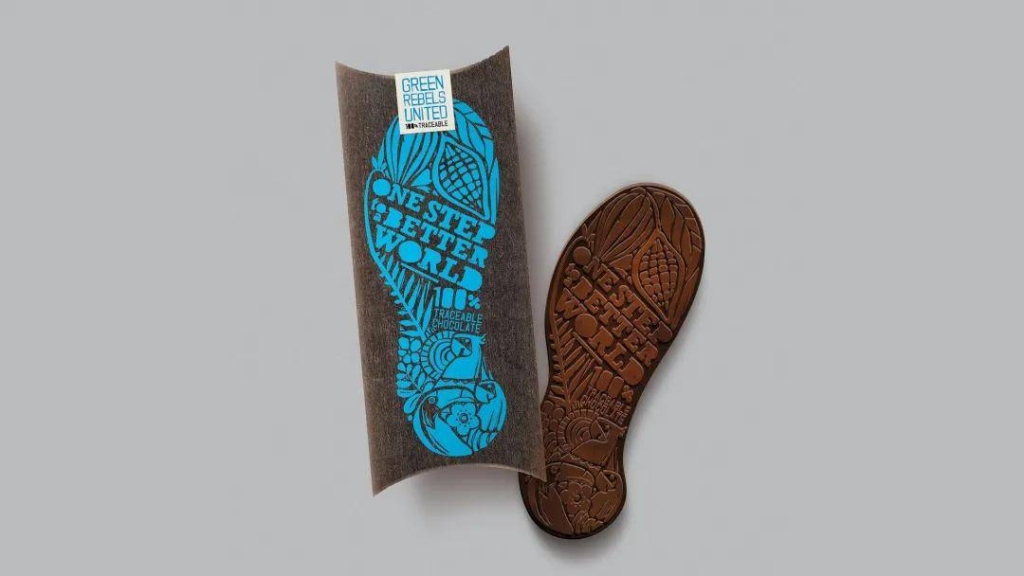
Source of the picture: Packaging of the World
Design: SGK Anthem
Green Rebels United has designed a traceable and sustainable conceptual packaging of chocolate. The entire product packaging is made of cardboard and uses high-contrast colours in order to attract consumers to join environmental campaigns and move towards a better world. The chocolate bar is designed in the shape of a footprint, with cocoa bean patterns and slogans printed on it, keeping the same visual effect as the outer packaging.
(5) T2 Tea Mini Fruits Packaging of Tea
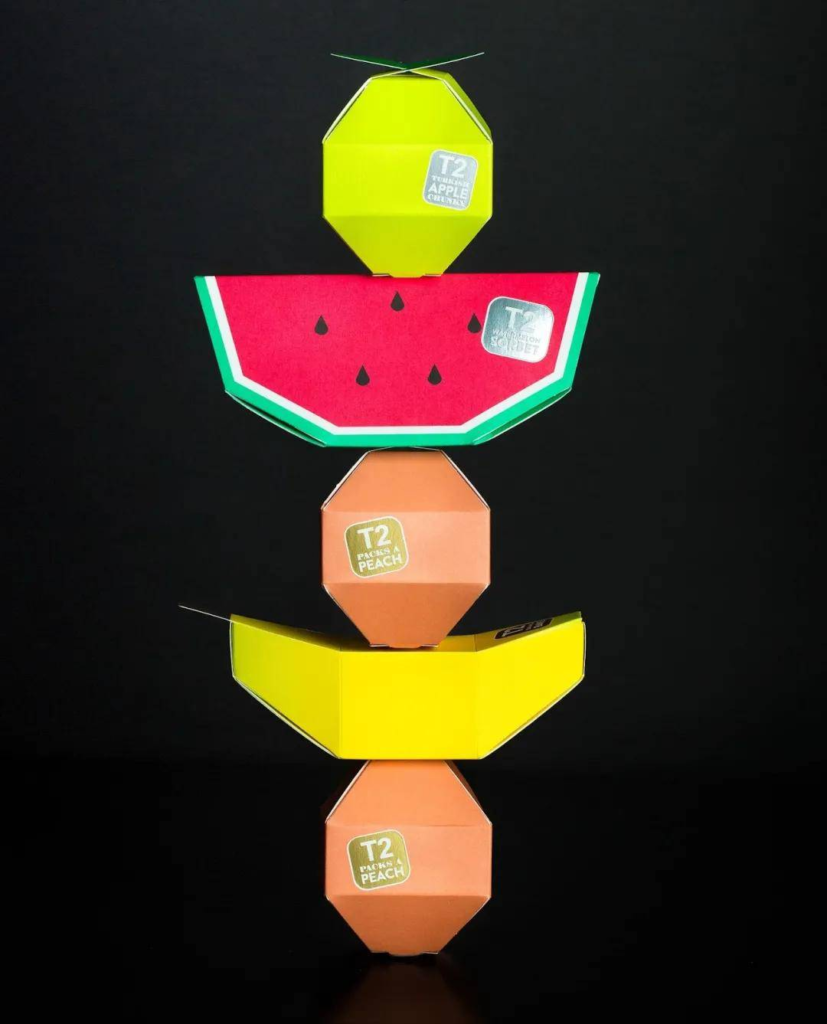
Source of the picture: Packaging of the World
Design: Christopher Stanko
The design of T2 Fruits is inspired by the abundant fruits in the market. The packaging is made of paper and the use of adhesive is minimised. The fiberboard is moulded into the shape of different fruits, which highlights the natural and fresh feelings and is full of visual impact. One of the design goals of T2 Fruits is to make it easier to pour tea leaves during the assembly process, integrating practicality with fun.
2. Reuse of creative packaging
(1) Gift Box of Moon Cake: Wow Moon
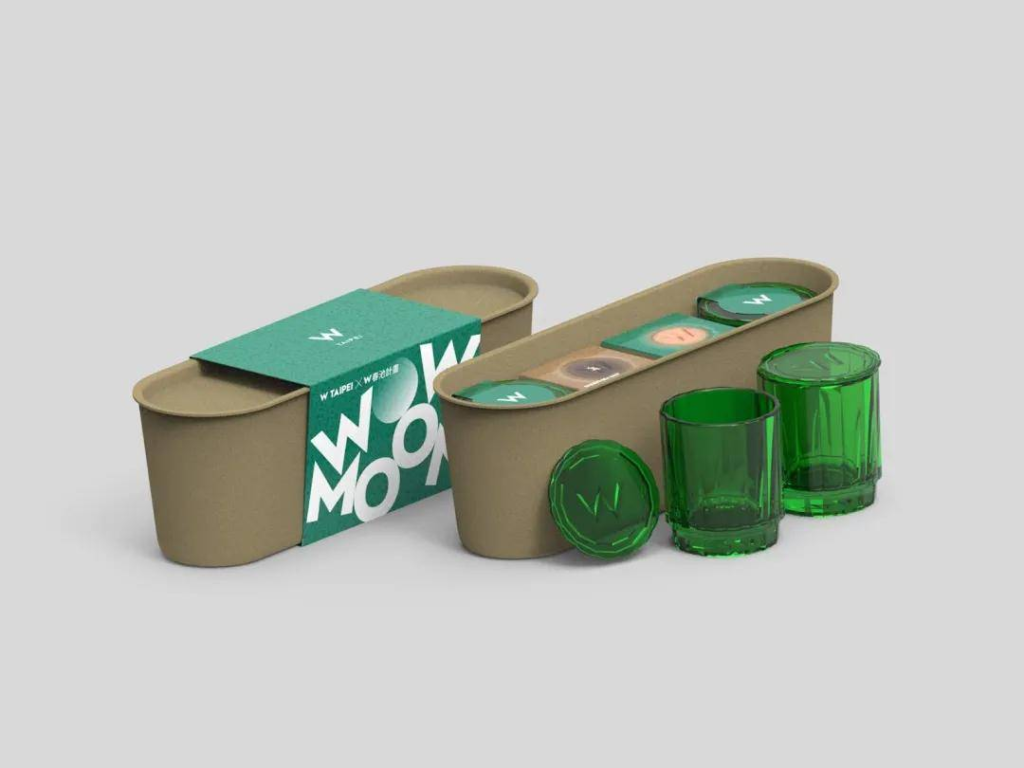
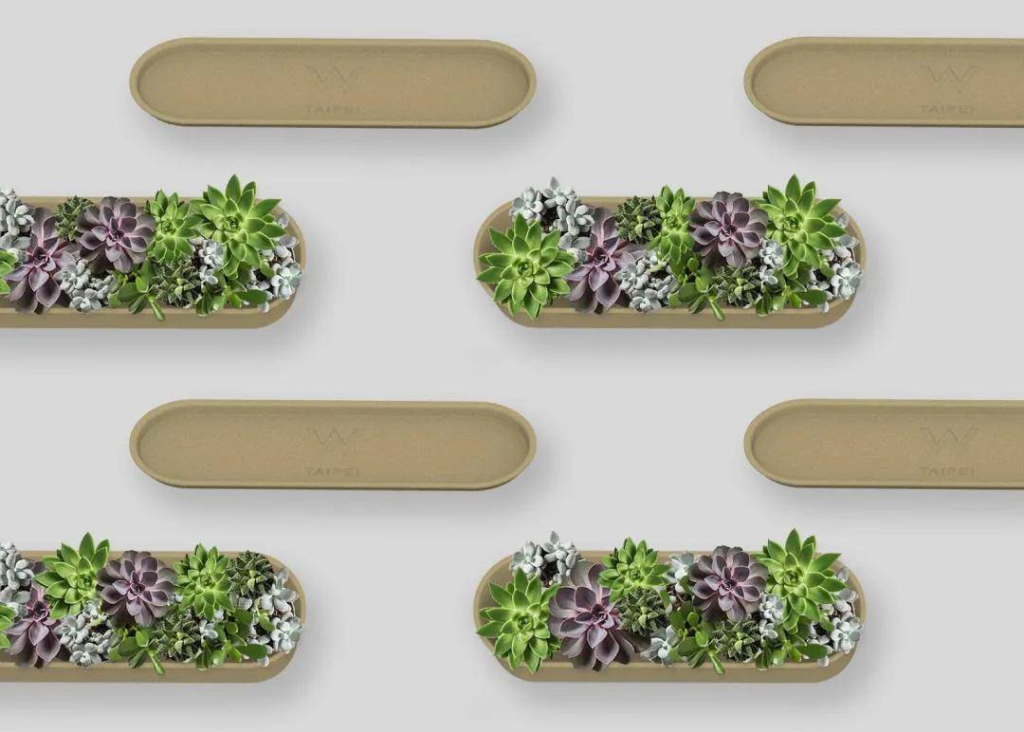
Source of the picture: Packaging of the World
Design: 7428DesignStudio
The Taipei W moon cake set designed by 7428 Design Studio is a moon cake gift box made of recycled paper pulp and recycled glass. The glass bottle has a sticker with a cocktail recipe on it, so guests can make matching cocktail while eating moon cakes. The packaging box is made of kraft colour pulp, and the green glass make it look fashionable and environmentally friendly. After eating the moon cakes, you can also reuse the box as a planter and grow small succulents in it, which is multi-purpose, fashionable and environmentally friendly.
(2) BioPackage Packaging of Egg
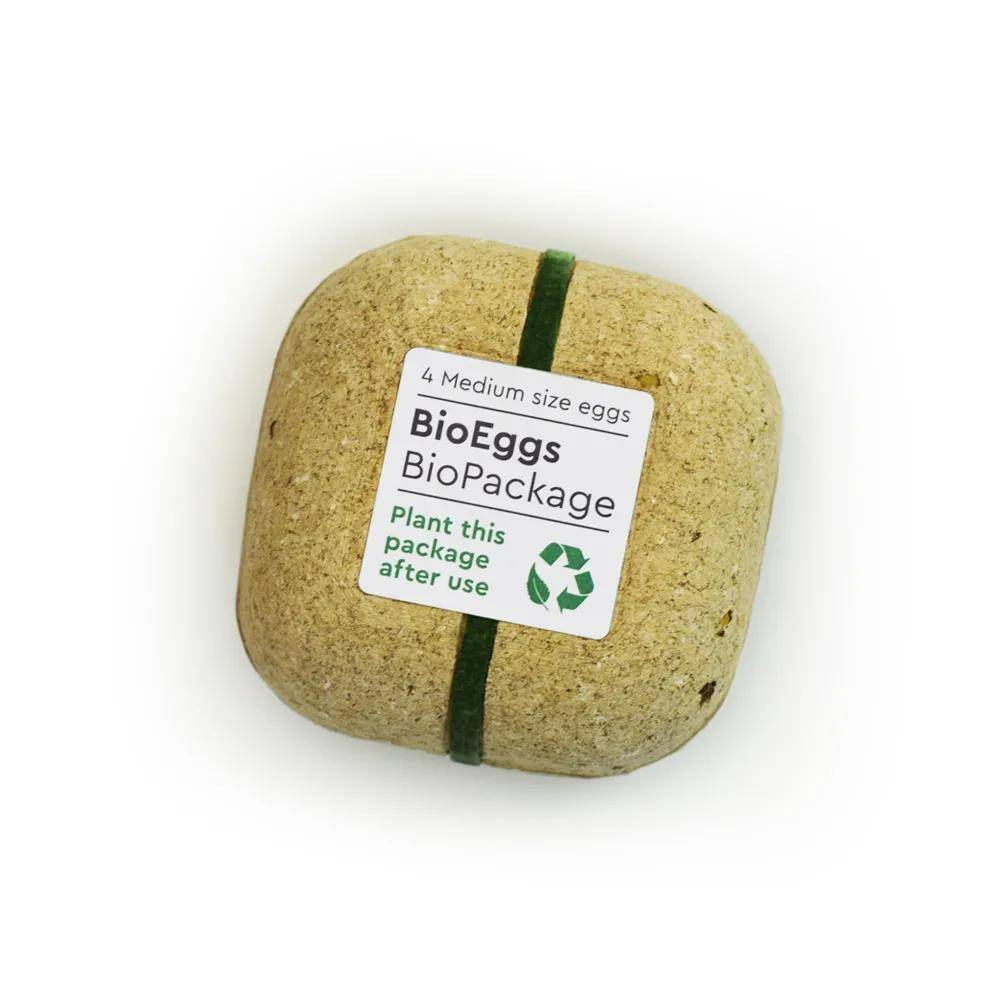
Design: George Bosnas
Biopack is an egg packaging made from clear pulp, flour and starch and biological seeds. When the eggs are used up, you can water or plant the packaging, combining practicality with fun. The seeds in the package will gradually grow into green plants. In this way, consumers also make a small contribution to environmental protection.
(3) Yunzhidian Paper-Plastic Packaging for Moon Cake and Coffee
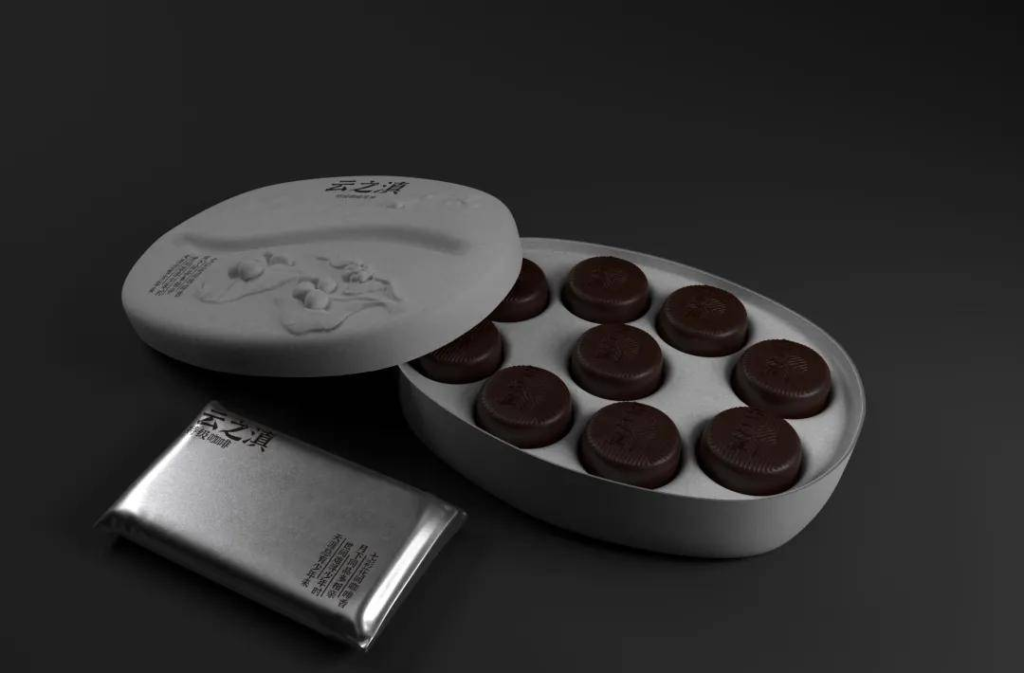
Design: Shanghai Yangsheng Printing Co., Ltd.
With the introduction of global plastic bans, this entire packaging uses paper and plastic as raw materials, and only adopts embossing and hot stamping technologies to display graphics and texts, which is green and environmentally friendly. Inside the box, the upper layer of the inner lining can be filled with moon cakes, and the lower layer can be placed with coffee beans. After the coffee beans are ground, the remaining coffee grounds can be mixed with the soil, the middle part of the ventilation holes can be dug out, and some small plants can be planted as bonsai and placed indoors. Small items can be also stored in places that have not been excavated. The whole packaging can be reused after the moon cakes and coffee beans are taken out. It has many functions such as holding bonsai, storage, and odor removal.
(4) Teabag for Kankaria Tea
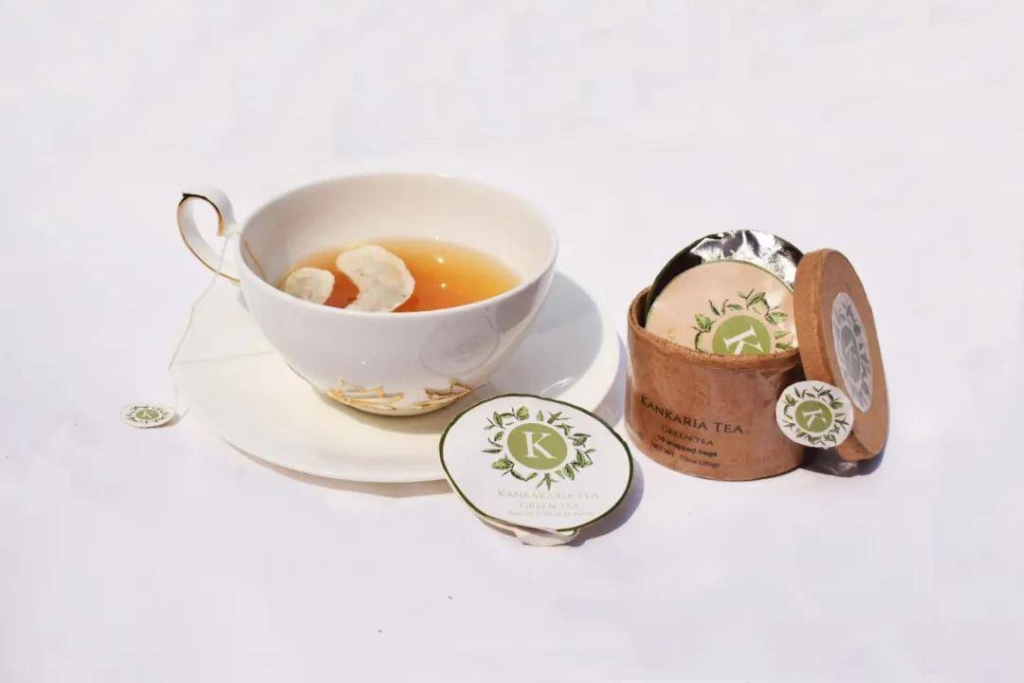
Source of the picture: Packaging of the World
Design: Siddhi Kankaria
In order to help Kankaria Tea Company enter the tea bag market, Siddhi Kankaria had came up with an amazing inspiration for packaging. The outermost packaging is moulded with corn fiber, the inner packaging is an aluminum laminated bag. In this way, the tea can retain moisture. The tea bag is made of bamboo fiber paper. The designer pays special attention to the health and beauty benefits of green tea. The tea bag is made into the shape of eye mask, which can not only contain tea but also be used as an eye mask. Thanks to the multiple uses of green tea, it is more convenient for customers to use and the benefits to the environment can be maximised.
Nowadays, topics about environmental protection are becoming more and more popular, consumers’ awareness of environmental protection has increased and they are willing to pay higher costs for environmental protection. More sustainable development related policies and regulations have also became available. Creative and interesting sustainable designs continue to emerge, but there is still a lot of room for development in terms of R&D technology of environmental protection packaging and the implementation of environmental protection. It is a shame that many excellent creative works only stay on the concept level. Real sustainability is not a show, nor a public relations tactic that brands use to win the favorability from consumers. It requires brands, designers, supply chains, and consumers to work together. In the foreseeable future, more sustainable designs will no longer stay in the concept level, they will be truly implemented, and will be sustainable and truly practicable.
